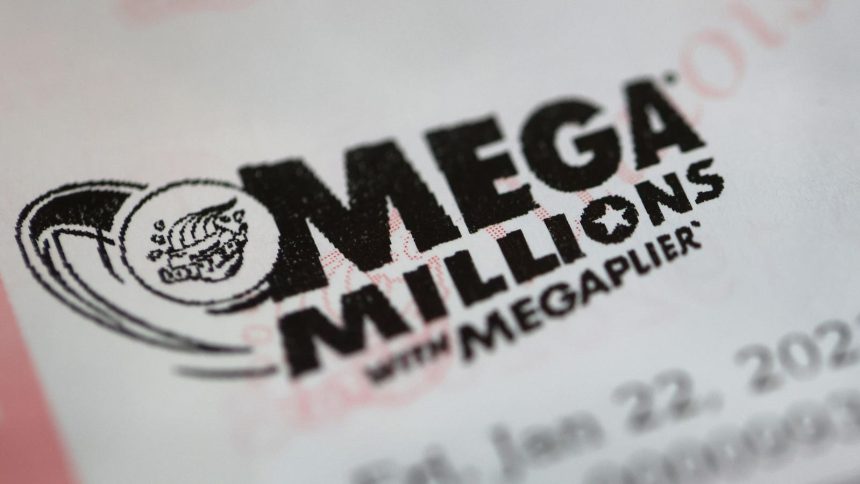The Mega Millions lottery has captivated the nation once again, with its jackpot soaring to an estimated $1.15 billion after no ticket matched all six numbers in the Christmas Eve drawing. This marks the fifth-largest prize in Mega Millions history, trailing behind only a handful of colossal jackpots, including the record-breaking $1.6 billion won in 2021. The allure of such a life-altering sum of money is undeniable, drawing millions of hopeful players to test their luck against the staggering one-in-302 million odds. While the advertised jackpot represents the total payout over 30 annual installments, those opting for the immediate lump sum, a popular choice, will receive a significantly smaller amount – approximately $516.1 million. This seemingly dramatic reduction stems from the present value calculation of future payments and the immediate application of federal and potentially state taxes.
The impact of taxation on lottery winnings is substantial, significantly diminishing the final take-home amount. A mandatory 24% federal withholding is applied to the lump sum, immediately reducing it to $392.2 million. However, the final tax burden doesn’t end there. Depending on the winner’s existing income and deductions, the applicable federal marginal tax rate, which can reach up to 37%, could further shrink the winnings to approximately $325.1 million. While the allure of instant riches remains, the reality of taxation serves as a stark reminder that the advertised jackpot is not entirely what it seems. For those who opt for the annual installments, the average yearly payment would be around $24.1 million, also subject to the highest federal tax rate of 37%. The tax implications don’t stop at the federal level. Several states also levy taxes on lottery winnings, with rates varying considerably. New York imposes a hefty 10.9% tax, while Arizona takes a more modest 2.5%. Conversely, states like California and Texas offer a reprieve, exempting lottery winnings from state income tax.
The anticipation surrounding the next Mega Millions drawing, scheduled for Friday night, is palpable. Millions will be glued to their screens, hoping their numbers align with destiny. While Mega Millions holds the spotlight with its billion-dollar prize, Powerball is also gearing up for its next drawing, offering a not-insignificant $117 million jackpot. This prize, with a lump-sum option of $53.4 million, would be subject to similar tax implications, yielding a net amount of approximately $40.5 million after the 24% federal withholding, or around $33.6 million if the highest marginal tax rate applies. The chase for these life-changing sums underscores the enduring appeal of lotteries, despite the long odds.
While the current Mega Millions jackpot ranks among the highest ever, it’s worth noting that two of the top three prizes were claimed just last year, further fueling the dream of instant wealth. Interestingly, Christmas Eve has historically been an unusual day for Mega Millions jackpot wins. The only instance occurred in 2002, the lottery’s inaugural year, with a $68 million prize that ultimately went unclaimed, a testament to the occasional quirks of fate and fortune. This highlights the importance of securely storing and verifying lottery tickets, as millions could be lost due to oversight.
The allure of bigger jackpots and improved odds has always been a driving force behind lottery participation. In October, Mega Millions implemented strategic rule changes designed to enhance the player experience and generate greater excitement. One key modification involved removing a “megaball” from the draw, subtly improving the odds of matching the remaining megaball from one-in-25 to one-in-24. These seemingly minor adjustments, coupled with larger starting jackpots, can significantly impact the frequency and size of prizes. A new “randomized” multiplier was also introduced for non-jackpot prizes, adding an element of surprise and potential for increased winnings. Furthermore, the elimination of break-even prizes ensures that matching a “megaball” now guarantees a minimum win of $10, offering a small reward even for partial matches.
The ongoing popularity of lotteries like Mega Millions and Powerball témoignes à la enduring human fascination with the possibility of instant riches. While the odds of winning remain astronomically low, the dream of transforming one’s life with a single lucky ticket continues to captivate millions. The recent rule changes implemented by Mega Millions, aimed at creating larger jackpots and enhancing the overall player experience, have undoubtedly contributed to the current frenzy. As the jackpot climbs, so does the anticipation, with countless individuals envisioning the possibilities that such a windfall could unlock. The excitement surrounding these large jackpots also generates significant media attention, further amplifying the allure and drawing in even more hopeful participants. While the ultimate outcome remains uncertain, one thing is clear: the pursuit of the Mega Millions jackpot will continue to capture the nation’s attention until a lucky winner claims the prize.



